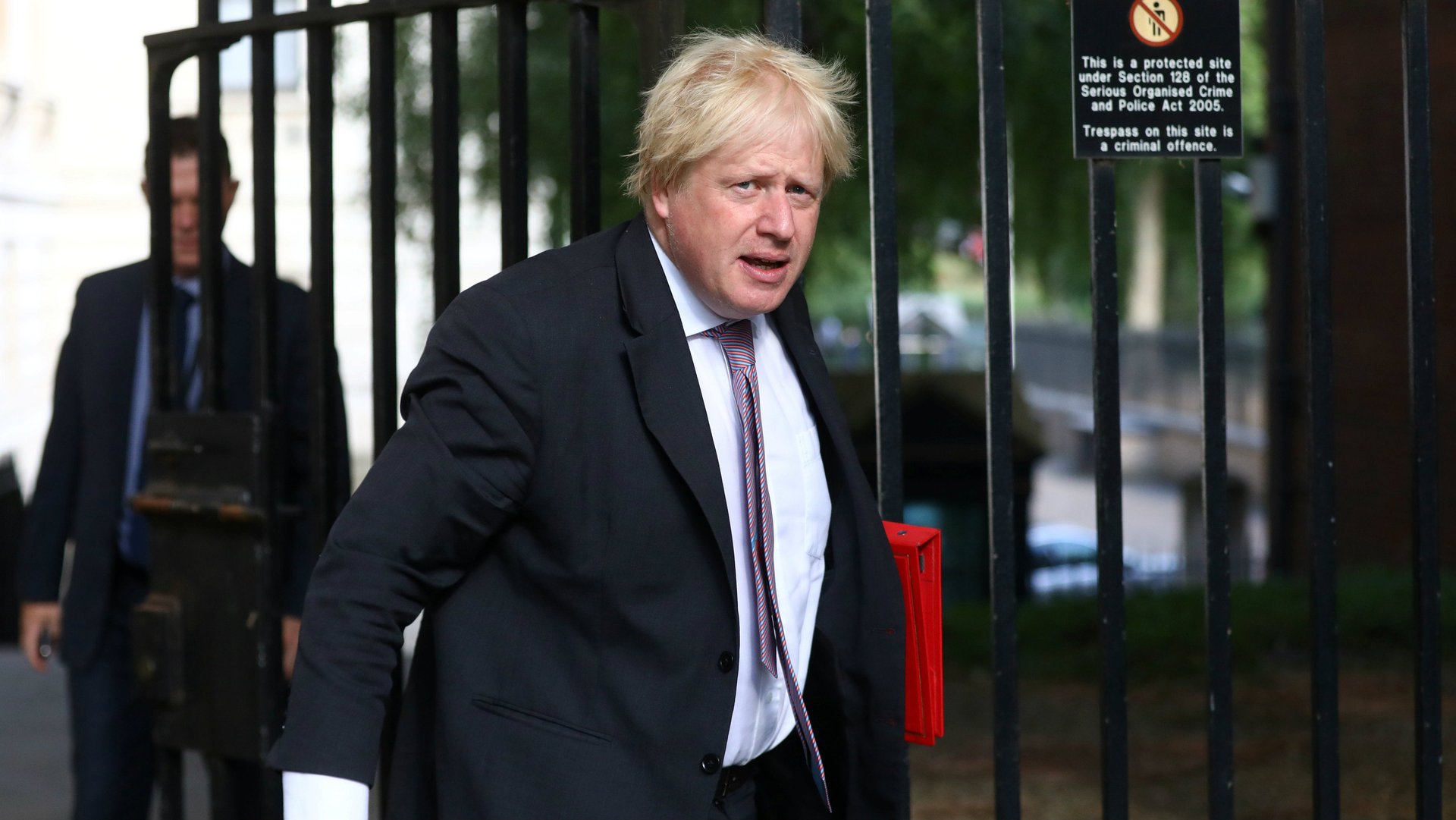The UK’s political chaos, as reflected by the long-suffering pound
Since the Conservative party took sole control of the British government in mid-2015, the pound has struggled to live up to its desired reputation as a strong and stable currency. Over the past three years, sterling has lurches from highs of $1.59 to lows of $1.20, a particularly wide range for one of the world’s most liquid currency pairs (the dollar-sterling trade is worth some $470 billion per day).


Since the Conservative party took sole control of the British government in mid-2015, the pound has struggled to live up to its desired reputation as a strong and stable currency. Over the past three years, sterling has lurches from highs of $1.59 to lows of $1.20, a particularly wide range for one of the world’s most liquid currency pairs (the dollar-sterling trade is worth some $470 billion per day).
Former Conservative prime minister David Cameron, who called the currency-crashing Brexit referendum after the 2015 general election, has seen his words come back to haunt him.
The current prime minister, Theresa May, campaigned on her “strong and stable” leadership, a phrase she repeated ad nauseam in the run-up to a 2017 snap election she called in hopes of expanding the Conservative majority. (In the end, her party lost its majority and now govern with the help of a small Northern Irish party, the Democratic Unionist Party.)
Recent months have further undermined the supposed stability of Conservative government: Seven cabinet ministers have resigned in the past eight months, the fastest rate of departures for a government in some time.
The pound’s ups and downs over the past few days show how hard it has been to keep up with Britain’s volatile politics. Oh, and Brexit hasn’t even officially taken place yet—the deadline less than nine months away.
Let’s recap…
Late on Friday (July 6), the pound rose as it appeared that May’s cabinet managed to come to an agreement on the nation’s relationship with the EU after Brexit. There was relief at the apparent unity behind a seemingly softer break from the bloc, with common rules and co-operation over customs continuing after Britain quit the EU.
But before the weekend was over, David Davis had resigned as Brexit Secretary. He said in his resignation letter that the compromise over Britain’s post-Brexit relationship with the EU “hands control of large swathes of our economy to the EU and is certainly not returning control of our laws in any real sense.” A person in his position needs to be “an enthusiastic believer in your approach, and not merely a reluctant conscript,” he added. Traders agreed. The pound continued to climb on Monday (July 9) morning, amid the belief that removing a long-time euroskeptic voice from the forefront of the Brexit negotiations would indeed deliver a softer exit.
But if one resignation is good, then two resignations are bad. Later in the day, Boris Johnson, perhaps the most prominent Brexiteer, resigned from his position as foreign secretary, raising fears that even more ministers would follow and May herself could be forced out by a confidence vote. Clearly, this could derail Brexit talks.
The pound fell from its intraday high by about 1%.
Slowly, then, the pound regained some of its losses as traders bet that May could avoid a leadership challenge. ”Firstly, we have to assume that without Boris Johnson continually baying for Theresa May’s blood and championing a hard Brexit, the process of government could actually be much smoother from now on,” Kathleen Brooks, research director at Capital Index wrote in a note to clients.
In the end, traders appear to remain optimistic that Brexit will somehow work out okay—the pound is well up from its post-referendum low against the dollar. For further encouragement, Michel Barnier, the EU’s chief Brexit negotiator, said 80% of the terms of divorce was agreed, suggesting that it could all be sealed soon. But positive thinking about politics may not overcome the reality of post-Brexit Britain’s economic situation. Today, for the first time, the UK’s Office for National Statistics started publishing monthly GDP figures and a rolling three-month figure. For the three months to May, the UK economy grew by only 0.2%, after stalling out in the three months to April.